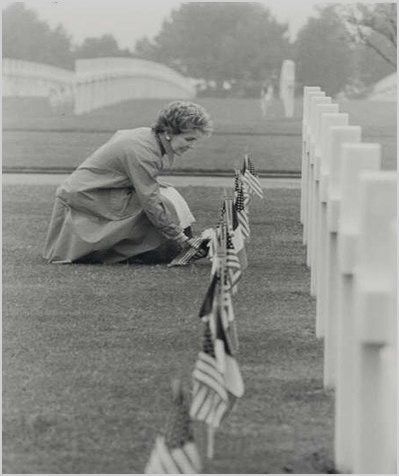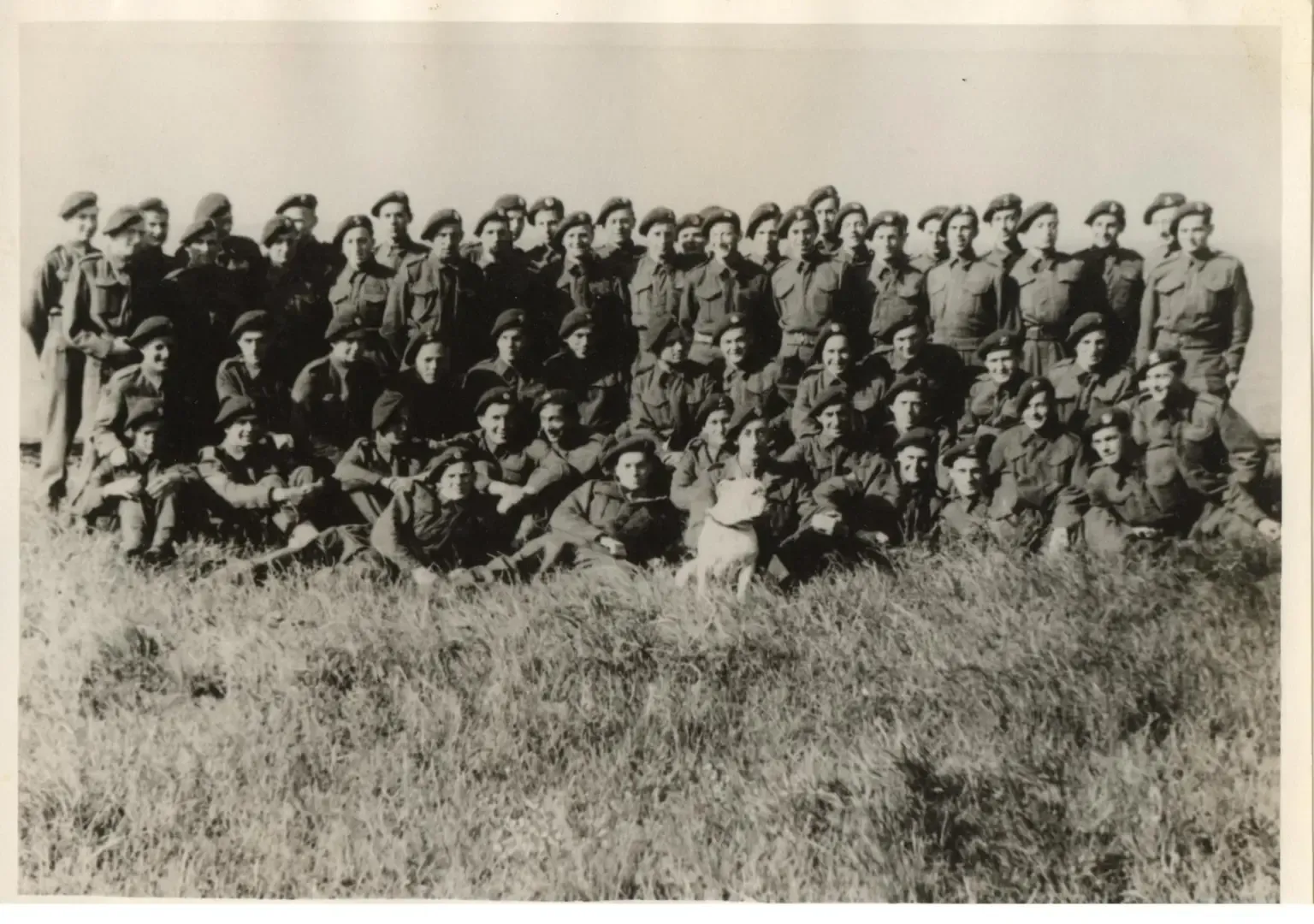Elizabeth Richardson - American Red Cross volunteer in the ETO
Alexander Braun • January 25, 2025
They were nicknamed the "Donut Dollies"

Elizabeth Richardson, second from left, and her "Donut Dollie" colleague, chatting with American GIs in front of her Clubmobile.
The grave marker for the fourth woman reads
Elizabeth A. Richardson
American Red Cross
Indiana July 25 1945
During World War II, many American women were eager to be part of the war effort. They served as factory workers, government clerks, WAVES (Women Accepted for Volunteer Emergency Service) or WAACS (Women's Army Auxiliary Corps), and artists who copied propaganda posters. Many young women found that the American Red Cross offered a unique opportunity for non-nurses.
Elizabeth Ann "Liz" Richardson, 25, from Milwaukee, was one of them.
In early 1944, Elizabeth joined the American Red Cross. Female applicants for Red Cross service overseas had to be college graduates, single, and at least 25 years old. Recruiting teams traveled the country to interview candidates. Letters of recommendation and physical examinations were essential, but the personal interview was the clincher and, as one official wrote, "often focused on the intangibles of personality." The rigorous selection process accepted only one in six applicants.
Twenty-five-year-old Liz passed her medical exam and sailed through the all-important personal interview. After six weeks of training in Washington, D.C., she boarded the Queen Elizabeth in mid-July 1944, one of 15,000 Americans "the Queen" carried across the Atlantic to join the war effort.
By the summer of 1944, nearly a million Yanks were scattered across England, most waiting to cross the Channel and fight the Nazis. Far from home - most for the first time - they missed family and friends, the comforts of familiar food, music, and fun. Most were very young. Many had not even finished high school. Many really didn't like England very much. They weren't much interested in Gothic cathedrals, art museums, tea, or the countryside. Even the pubs were often unattractive, with weak, warm beer and early closing times. They were bored, the food was monotonous, and the women too few. And there was the uncertainty of not knowing when they would go into battle and when they would come home.
The American Red Cross was responsible for lifting the morale and spirits of these homesick GIs, primarily by running recreation clubs in major cities. By 1944, however, Yanks were stationed all over the British Isles, most of them far from cities with clubs. The Red Cross's response to this massive dispersal of troops was the Clubmobile, a single-decker bus. Liz was assigned to work on a Clubmobile equipped with coffee and doughnut-making facilities. Because of her leadership and organizational skills, Liz was soon promoted to captain of her unit, which usually consisted of three young women and a British or French driver.
The Clubmobile Service, a great morale booster for soldiers overseas, was created as part of the Club Service. A service club on wheels not only brought coffee and doughnuts to the fighting men but also magazines, books, cigarettes, lifesavers, chewing gum, cream, razors, and even musical entertainment on phonographs. Liz and her colleagues were not warriors and usually stayed far from the front lines. The work they did was traditionally defined as "women's work": they cooked, cleaned, and waited on the men. Yet these women provided essential wartime service that included demanding physical labor and stressful emotional costs.
During World War II, about 1,000 young, energetic women volunteered to work in Clubmobiles to support military troops. The American Red Cross Clubmobile Service also had black women serving as Clubmobile workers during World War II. Because of segregation in the United States, they were only allowed to serve black soldiers.
A couple of weeks after the successful landing in Normandy, 80 Clubmobiles and 320 volunteers crossed the English Channel to start operating their kitchens near the front lines.
In February 1945 Liz was sent to Le Havre, France, where she continued to work in her Clubmobile. The Clubmobile women worked long days, sometimes twelve to fourteen hours. On a few occasions, they worked around the clock to feed the U.S. troops doughnuts and coffee. They still had time for a social life, though. Liz had at least two "romances" during her year in Europe. In England, a second lieutenant named Larry took her to division and civilian dances, but their relationship ended when he was transferred in November 1944. When Liz was sent to France in February 1945, she met Frank, a first lieutenant in the Air Transport Command (ATC). Frank attended her funeral.
On the morning of July 25, 1945, Elizabeth took a small military plane (a Piper Cub) from the Le Havre airfield in Normandy to Paris. There she was going to meet with the Red Cross to learn about her new assignment in Germany.
However, during the flight, the pilot, Sergeant William R. Miller, struggled to navigate through a thick fog, and the plane crashed near Rouen. Tragically, Elizabeth and Sergeant Miller lost their lives. Elizabeth was only 27 years old.
Liz and her pilot, Sergeant William R. Miller, were first buried in a temporary cemetery at St. Andre de L`Eure, 37 miles south of Rouen. Then, in April 1949, they were moved and interred at their final resting place, the Normandy American Cemetery at Colleville-sur-Mer.
Sometimes there are flowers placed at the base of the marble cross that marks Grave 5, Row 21, Plot A. Nancy Reagan, the First Lady at the time, was probably the most prominent visitor to Elizabeth's grave. She visited Liz's grave on June 6, 1982, and placed flowers there during the 38th anniversary of D-Day.
Nearby, at the new Visitor Center, there is a large photograph of Elizabeth Richardson carrying a heavy coffee urn, smiling, and wearing lipstick.
If you want to learn more about the American Red Cross volunteers on the frontlines of World War II, you can download an excellent thesis by Julia A. Ramsey
here.











